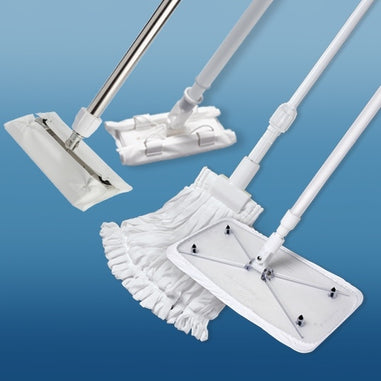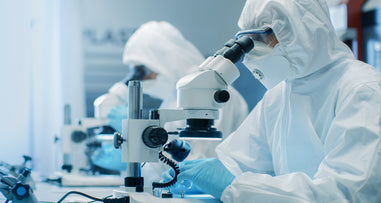- No products in the cart.
A medical device cleanroom controls its environment by allowing a low level of pollutants, like chemical vapors, dust, aerosol particles, and airborne microbes. A cleanroom is a must for manufacturing floors and scientific research labs. The contamination level of pollutants stays in control in a cleanroom. Cleanrooms are measured by the total number of particles within a specific cubic meter or foot.
According to ISO standards, cleanrooms can be from class 1 to class 9. Class 1 has the best quality, and class 9 is the cleanroom with the least qualities. Class 9 has a typical room environment, having 3.52 x 10⁷ particles with sizes of 0.5µm or more per cubic meter.


Class 3 medical devices include pacemakers and heart valves, which require a Quality Management System regarding cleanroom design. Class 3 devices have regulatory control with a higher degree. That’s why these devices need the most stringent manufacturing conditions. Particles in the air become a significant issue when part sizes shrink, and devices become more complex. In such cases, the cleanroom requires many facilities. Like class 1 and class 2 devices, ISO 7 and 8 cleanrooms aren’t sufficient for class 3 devices. Class 3 devices need cleanrooms from more developed classes compared to ISO 7 and 8 cleanrooms, i.e., ISO 6 or better.
For over 40 years, Lab Pro Inc. has been committed to providing medical device cleanroom supplies in California and worldwide. To learn more, visit the biggest Lab Supply showroom in California, or contact us online or at 888-452-2776.
Cleanroom Overview
Manufacturing processes and medical devices can get affected due to small contaminating particles. That’s why cleanrooms are so important. In a cleanroom, along with controlling particulate contamination, there are arrangements for controlling temperature, pressure, and humidity. High Efficiency Particulate Air (HEPA) filter is a special filter for trapping particles with sizes of 0.3 microns or larger. The delivered air to the cleanroom goes through the HEPA filter. Ultra Low Particulate Air (ULPA) filters are also used for stringent cleanliness performances. Usually, cleanrooms have special clothing rules. Aprons, face masks, beard covers, boots, shoes, lab coats, bouffant caps, etc. are cleanroom garments.Cleanroom Classifications
Classifications of cleanrooms are based on the cleanliness of the rooms. There are various standards for the classifications. The International Standards Organization (ISO) has an established standard, which is TC 209. The standard classifies a cleanroom by the total number of particles per cubic meter of air. The Federal Standard 209 of the USA is another standard for cleanroom classifications. This standard classifies the cleanrooms by the total number of particles with sizes of 0.5µm or more per cubic feet of air. In table 01, we can see the detailed classifications of the cleanroom.According to ISO standards, cleanrooms can be from class 1 to class 9. Class 1 has the best quality, and class 9 is the cleanroom with the least qualities. Class 9 has a typical room environment, having 3.52 x 10⁷ particles with sizes of 0.5µm or more per cubic meter.
Table 01: Classifications of Cleanrooms

Classification of Medical Devices and Cleanroom Requirements
Usually, medical devices have 3 classes: class 1, class 2, and class 3.Class 1 Medical Devices
Class 1 medical devices are devices with the lowest risks. These devices don’t need a formal review of the Food, Drug, and Cosmetic Act under Section 510(K). Around 75% of the listed devices by FDA are class 1 devices. Bandages, medical tapes, etc. are class 1 medical devices. General controls are good enough for class 1 devices. There’s no need for a Quality Management System for class 1 devices, according to ISO 13485. For class 1 devices, ISO 7 and 8 cleanrooms are good enough. For example, a softwall cleanroom is sufficient for class 1 devices.
Class 2 Medical Devices
Class 2 medical devices have greater risks to the users and patients. You can’t ensure efficacy and safety with general controls. Most of these devices need a formal review of the Food, Drug, and Cosmetic Act under Section 510(K). The FDA clears around 3000 class 2 medical devices every year. Class 2 devices include most coronary catheters. However, class 2 medical devices need a Quality Management System regarding cleanroom design, according to ISO 13485. For class 2 medical devices, ISO 7 and 8 cleanrooms are common.Class 3 Medical Devices
Class 3 medical devices are the riskiest for users and patients. These devices provide support to human life. So, these devices have potential risks of injury and illness. PMA application is necessary for most of class 3 medical devices. The FDA approves around 40 class 3 medical devices every year.Class 3 medical devices include pacemakers and heart valves, which require a Quality Management System regarding cleanroom design. Class 3 devices have regulatory control with a higher degree. That’s why these devices need the most stringent manufacturing conditions. Particles in the air become a significant issue when part sizes shrink, and devices become more complex. In such cases, the cleanroom requires many facilities. Like class 1 and class 2 devices, ISO 7 and 8 cleanrooms aren’t sufficient for class 3 devices. Class 3 devices need cleanrooms from more developed classes compared to ISO 7 and 8 cleanrooms, i.e., ISO 6 or better.
Summary
Medical devices from each class have unique requirements regarding cleanrooms. Having a proper idea about the cleanroom classifications can help to select a suitable cleanroom for specific types of medical devices.For over 40 years, Lab Pro Inc. has been committed to providing medical device cleanroom supplies in California and worldwide. To learn more, visit the biggest Lab Supply showroom in California, or contact us online or at 888-452-2776.












































